There is a large variety of types of hydrangea. Proper trimming of hydrangea, compliance with the recommendations for the formation and accounting of the characteristics of certain types and varieties of hydrangea - these are factors on which the decorativeness of the plant, the abundance of flowering and the size of its inflorescences. Pruning is a very important point in the cultivation of hydrangea.
Trimming tree hydrangea (H.arborescens)
This type of hydrangea is characterized by large flat inflorescences, painted first in a greenish tint, after passing into white, and then in pink. Caring for the tree of hydrangea lies more in autumn pruning. The kidneys of next year are formed on the shoots of the current one. Shelter for wintering is necessary with the presence of young shoots and harsh cold winter. The plant has the ability to quickly form shoots, also has a large number of zero shoots. It is usually not formed according to a certain form of the crown, it grows as a freely growing shrub. After landing, the branches are most often shortening for better formation and plant growth. On the shoots of this year, there are usually a lot of inflorescences, there is plenty of blossom. These shoots of the current year appeared both on all the shoots of the previous one (along the entire length) and on older shoots, on underground shoots. They are called zero. Some of the most faster zero shoots can bloom.
In the fall, only dry inflorescences are cut.
In the spring make sanitary trimming, cut thin, weak, frozen, damaged and dried shoots. Soots by age 1 year cut off, leaving from 3 to 5 kidneys, of which new strong processes will appear, with large inflorescences. The rustling of shoots occurs quickly, already in the same year they will grow and bloom even more lure. In case of severe trimming from 2 to 3 kidneys, bloom becomes more scarce. And it begins later, at the end of July.
There is also a thinning trimming. This removal of shoots thickening a bush (small shoots growing in a center, weakened zero shoots that are not capable of flowering).
There is a trimming of hydrangea for flowering. This is pruning the growth of the previous year, with leaving from 2 to 4 pairs of well-formed kidneys. Of these, strong blooming shoots will appear in the current season. Often, because of the harsh winter, it is necessary to cut a lot of frozen shoots, then the main and only trimming will be sanitary.
In the first four years of the life of the young bush pruning do not. Plant shoots in young plants are used in the formation of the root system, increasing its mass. In the spring, hydrangeas have a strong sap flow begins, when pruning young fledgling bush plant can lose a lot of juice and die. If you still need to cut some shoots, then remove them better when plant leaves bloom already.
In the case of renewal pruning a bush old tree hydrangea (carried out every 5-7 years) in the spring it is cut completely, all runners older than 5 years, leaving stumps height of 10 cm. Large very old plants are not recommended to cut in one cutting. Otherwise, a high probability of death of the plant due to lack of supply of its root system. Renewal pruning is best done in three times in three years.
If you want to get cuttings from the tree hydrangeas, they need to do when harvesting began sap flow in the plant. Otherwise, cut the cuttings take root poorly.
Hydrangea Ash, raznosherstistaya and a number of other, similar in appearance hydrangeas, cut off by analogy.
Pruning Hydrangea paniculate (H.paniculata)
Description and basic types of pruning
Externally, the bush like a tree hydrangea. But the plant is spreading more and more powerful. Flowering in the current year shoots in the form of inflorescences, have a conical shape. New shoots formed from buds on the branches of the age 2-3 years. It tolerates cold, harsh winters. Kidney paniculate hydrangea next year, as well as in the tree, are formed on the current shoots. Hydrangea paniculata usually does not harbor for the winter. The plant has a high ability to form shoots. Ability to form shoots zero lowered. And plants can be formed either as a shrub or as a tree.
Autumn cut only faded inflorescences to the first pair of kidneys. Do not leave the winter dry inflorescence, otherwise, under the weight of snow, they may break or deform (Hydrangea paniculate timber in soft and fragile), duck, and further plant will need to be tied to it vertically straightened.
In the spring (in March) make the main sanitary trimming, cutting thin, weak, frozen, damaged and dried shoots. Crop the annual shoots, leaving from 3 to 5 kidneys. Remove small shoots thickening a bush, and on large leaves left a pair of strong processes. The more massive escape, the more the kidneys must be left on it to get strong and strong branches in the future, abundant flowering. Before the pair of wokeered kidneys, you can refresh and cut off fall after the deletion of inflorescences. Miscellaneous hydrangea is quickly thickened, it increases every year the number of branches and inflorescences. This can lead to the weakening of the branches and brace of inflorescences. Therefore, it is welcome in the spring shortening of all last year's shoots, it favorably affects flowering. The proper formation of a young plant, as well as the systematic annual trimming of adult plants. When trimming, form a beautiful neat crown of the bush. With the right execution of all recommendations, every year the flowering will be only abundant and more lure.
In the case of rejuvenating trimming, out of the growing out of one point of shoots, leave a couple of shoots that grow out, the rest are cut.
In many respects, the trimming of the buggy hydrangea depends on the shape that it is necessary to give the plant: a strabetic with a straight or rebuilding crown, a bush or a bush with a raised crown.
Formation of a strambed form of a scumping hydrangea, features of trimming
Often confused by a lot of hydrangea with a tree, since there is a lot of durable widespread branches, skeletal shoots. The trimming of the tree hydrangea occurs like trimming of the shrub, and the trimming of a scraping like a trimming of a tree, and the formation of it is possible both in the form of a bush and in the form of a strawbet tree. In plants aged 5-7 years, the kidneys on the lower branches are practically awakening. This feature of the Miscellaneous Hydrangea makes it possible to form it by the tree.
To form a tree, you need to select a seedling with a pronounced stem. In the spring of the young plant (2-3 years), it is necessary to choose one reprehensive escape. He will serve a strawbet tree trunk. It must be tied to the support, without damaging and without bothering it, strictly in a vertical position. In the summer, side shoots are formed on the tree, they must be seen. They are not removed, because They serve in the formation of a tree trunk as a nutrition. Thus, the barrel of the strap thickens, stronger, and the next spring they are cut onto the ring. As the desired height of the village is achieved (from 0.5 to 1.5 meters), it is necessary to cut it, so the height of its branching is formed. Next, Croon is formed from last year's shoots.
There are various varieties with different characteristics, growth rate. Featuring a certain variety of the buggy hydrangea, one can form a strambed tree both with a rejuvenating and straightforward crown. Forming a scattering hindstry with a disrupting crown, the future barrel of the strambed tree is cut at 1.5 meters. Forming a plant with a sparkling crown, the future of the tree is cut by 1 meter. To form a "waken", the downward crown of hydrangea, the most suitable will be the Grandiflora varieties ("Limelight"), "LimeLight" ("LimeLight"), for the formation of a reprehensive crown - Kiuchi varieties ("Kyushu") or Tardiva ( "Tardiva").
In the future, the pruning of the plant is in shortening for 2-3 kidney of skeletal branches every year, before the formation of the desired form of the crown. Root pores as they appear cut. Also compart faded, blonded inflorescences, shoots to the first pair of kidneys, for abundant flowering next season. Systematically remove damaged branches, zero shoots, pinch the side processes on the strain in the current year, cut them out in the following. After a couple of decades, it turns out a strambl tree with a barrel from 8 to 10 cm in diameter. Optionally, you can form a tree with several main trunks. This type of stan is very strong and stable. The rubber tree of the buggy hydrangea, the "bouquet on the leg" - will serve as an decoration of the household plot, a beautiful and unusual focus of garden decoration.
The formation of a bush form in the pittal hydrangea, features of trimming
The planting seedling is plugged at 3-4 cm. This contributes to the appearance of several processes from the ground. Then the weak zero shoots are cut off, leaving strong. The bush is formed, shortening the growth of the previous year, with leaving from 1 to 3 pairs of kidneys. Excessive thickening branches are removed, in the thickening of the bush, the inflorescences are minor. For the formation and maintenance of the buggy hydrangea in the form of a bush, basically sanitary trimming is necessary. To achieve stronger shoots and large inflorescences, you can cut the weak rings, who have been defeated. It will be damaged to flowering, but large separate branches and inflorescences are formed.
Having cutting a bundler hydrangea in the form of a bush, you can get a beautiful and useful decor element - a living, freely growing elevation, which will please not only with lush flowering, but also with your density.
The formation of a bush with a raised crown in a buggy hydrangea, features of trimming
In the spring, the plant in the age of 2-3 years is removed weak, damaged, thickening branches. Leave from 3 to 5 strong shoots growing at an angle of 30 degrees from the vertical position. Next, they are fixed to the supports that must also be installed at an angle of 30 degrees. This contributes to the development and formation of the branches of the plant in the right direction. Every year it is necessary to remove new lower legs to the ring, leaving only the top and 2-3 pairs of the upper kidneys. These kidneys will later give shoots. The central escape will form new kidneys over developing shoots, which next year will become upper. With the onset of the new season, these upper kidneys leave, cutting into the ring side shoots formed in the previous year. We systematically, throughout the summer, all young shoots are removed (without waiting for their decisions), formed on the central, below 2-3 pairs of the upper kidneys. Pruning and forming must be carried out every year until the required height of central conductors is achieved. On average, the required height of the plant is formed within 2-3 years. Upon reaching the length of shoots in one meter, they are cut off, forming a frame skeleton of crowns. Forming and sanitary trimming make every year, throughout the life of the plant.
Pruning large hydrangea (H.Macrophylla)
Large hydrangea is a typical shrub. Without life, zero shoots are formed. Soots of 4-6 years old are aging. Flowering occurs on the inflorescences of current shoots, formed on the shoots of last year. Flower kidneys are formed on the upper third of the branch. Not so long ago, grades forming kidneys on all shoots. Therefore, pruning should be correct, minimal, cautious and gentle. The less cut the large-scale hydrangea, the time of her bloom. This is a thermal-loving plant, and its flowering depends in many respects from wintering. The bush needs to be well covered by air and dry shelter.
In the fall, the trim is better not to do, only remove the bleached inflorescences.
Sanitary trimming is carried out in the spring. You can not cut last year's shoots, because They are floral kidneys. Young year-old shoots leave. Remove dried, damaged branches on the ring. Crop the secateur needs neatly, at right angles. To avoid deformation and damage to the kidneys. If you cut more than 1-2 kidneys, the plant may not bloom. We systematically remove 1/4 of the old shoots that have many side processes, branches, in order to avoid thickening bush. Pruning such skeletal shoots contributes to the growth of new branches from the base of the plant. Carry out this trimming immediately after flowering. Floral kidneys are formed on the formed new processes, of which there will be flowering in the new season.
Rejuvenating trimming is necessary every 4-5 years. The branches are cut at an altitude of 30-40 cm from the ground level. This gives a renewal of the plant, promotes the growth of new shoots and further flowering. Also fully cut branches that have a curved shape, tilted, crossed. Thus, a beautiful compact shape of a bush is formed.
Among the large-scale hydrangeas, you can sometimes meet varieties, varieties that carry a strong trimming, even to ground level. For example, the Endless Summer grade ("Endless Summer") with very strong trimming, blooms on new shoots, on the current increase. At the same time, the bloom is single, it comes late, at the end of summer (August). If it is moderately cropping the hydrangea of \u200b\u200bthis variety, then bloom occurs richly, it comes before (late July). Among the large-scale hydrangeas there are varieties capable of blossoming and at zero shoots - Forever And Ever "(" Forever and Ever ")," Howeria Miral "(" Hovaria Miral ").
Care after pruning
After pruning the plant requires feeding with mineral and organic fertilizers. After trimming, the base of the bush is mounted with a compost, peat, manure, humus (about 5 cm). Spring feeding of hydrangea stimulates the growth and development of new shoots, conducive to flowering. In the summer, a chicken litter is desirable, divorced with water in proportions of 1:10.
Observing the rules of pruning and forming hydrangea, depending on the characteristics of the variety, you can implement any bold design solution using this bright and lush plant. Hydrangea will delight everyone with its abundant flowering and thick foliage of the crown.

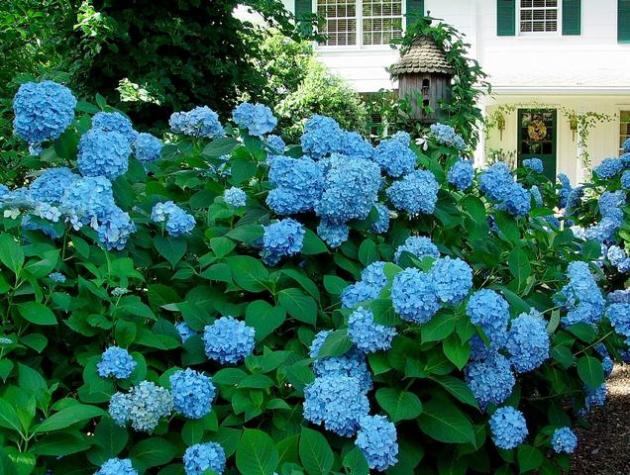
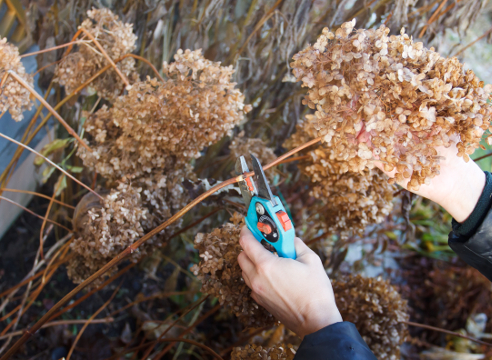
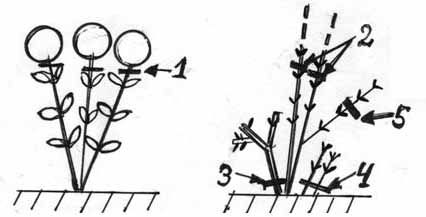
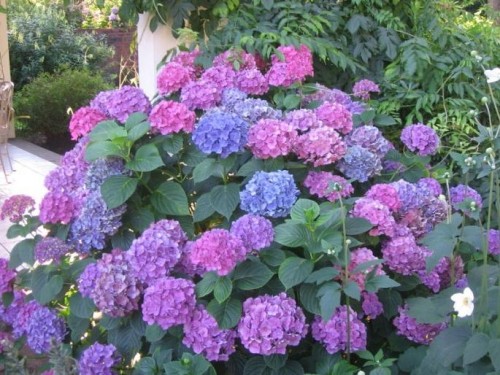
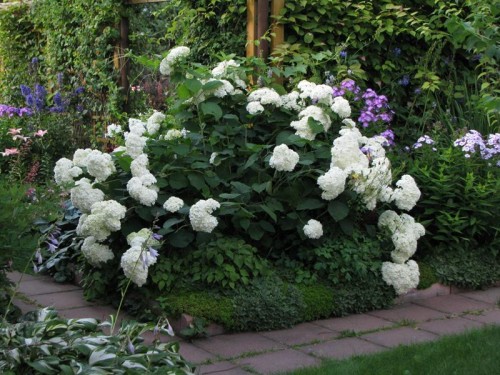
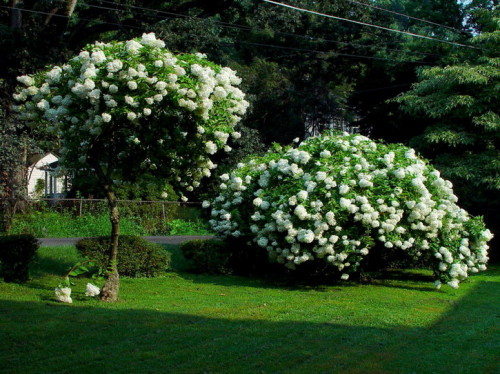

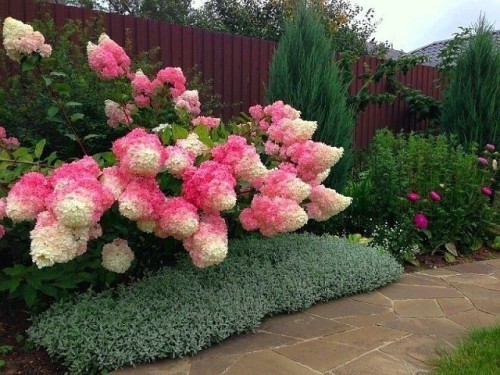
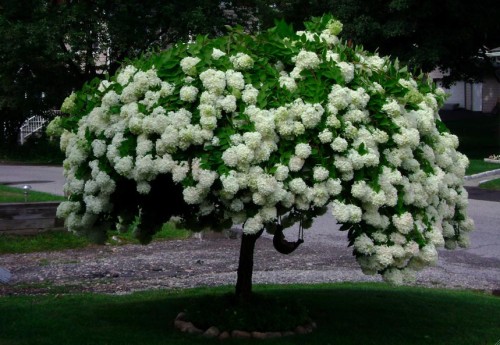
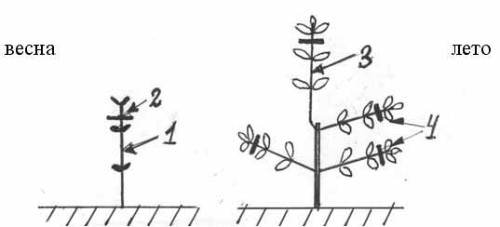
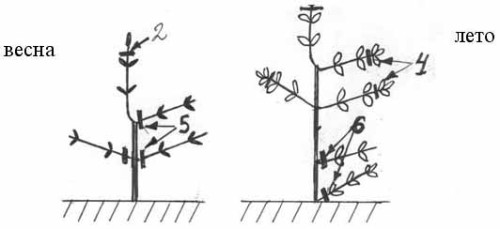
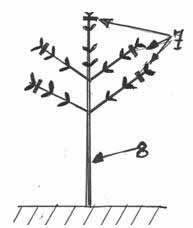
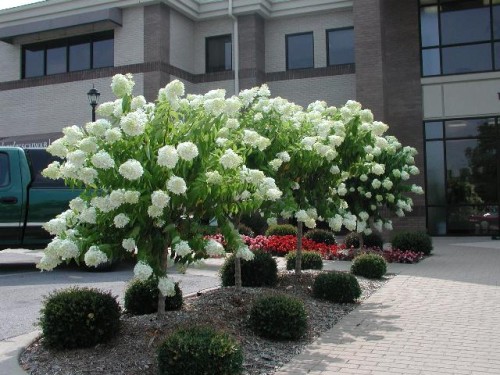
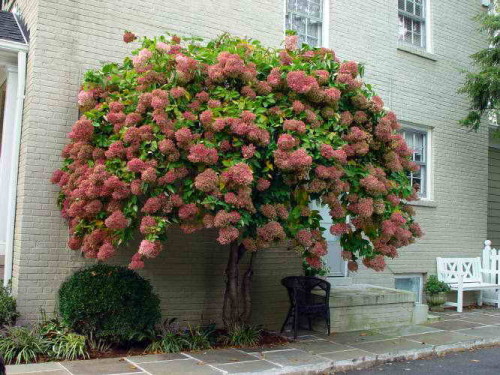
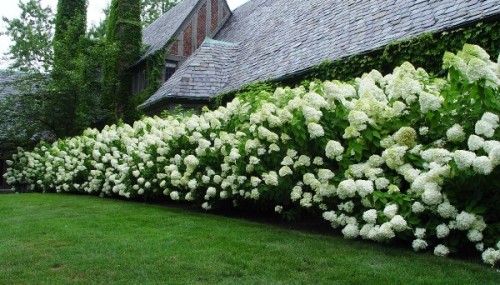
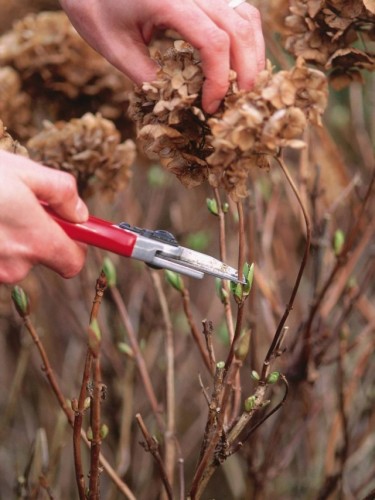
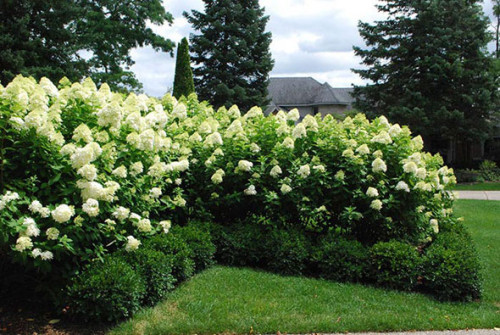
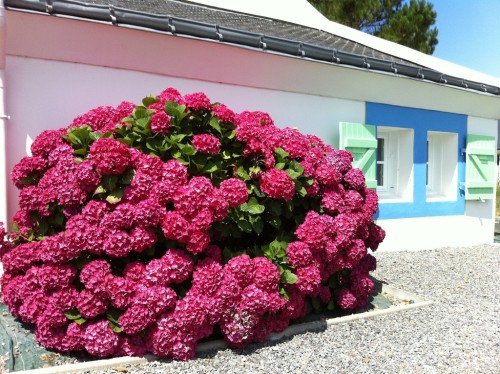
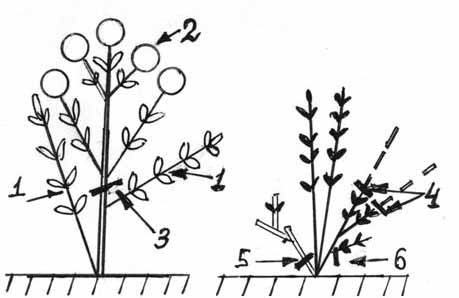
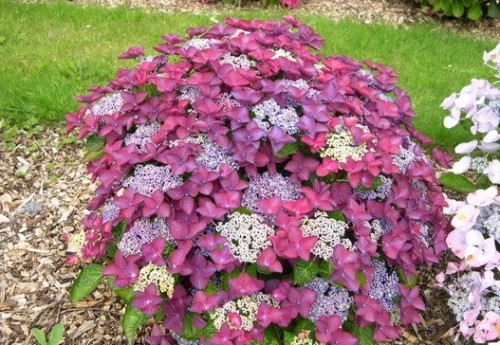
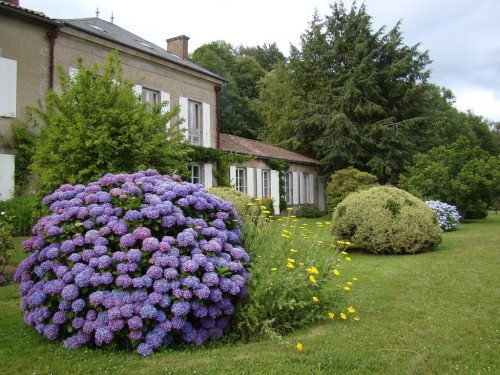
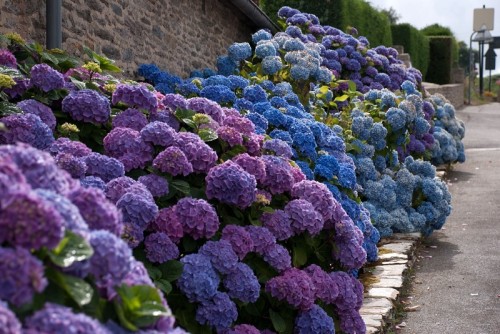
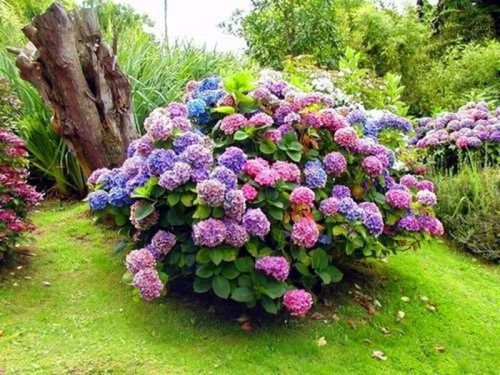
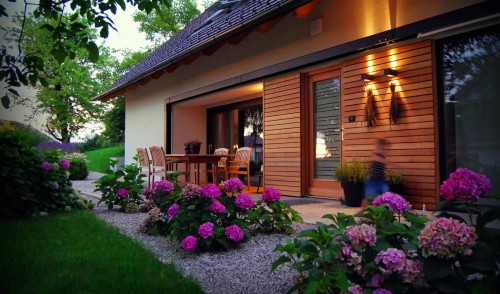
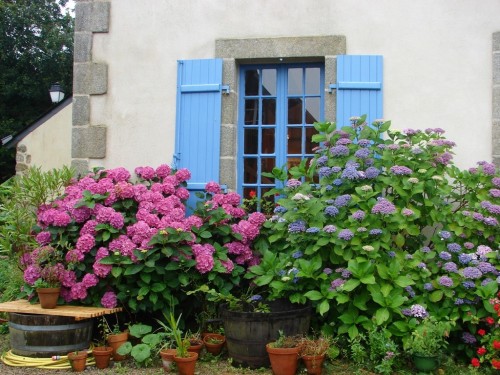
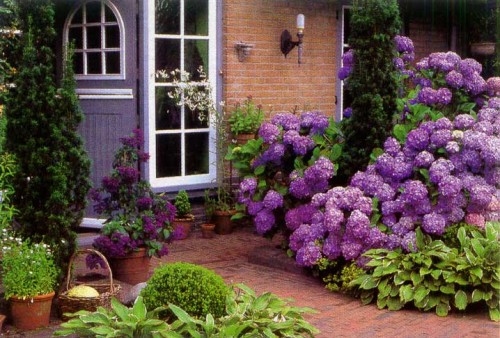
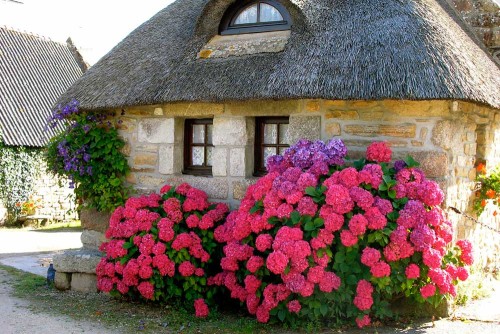
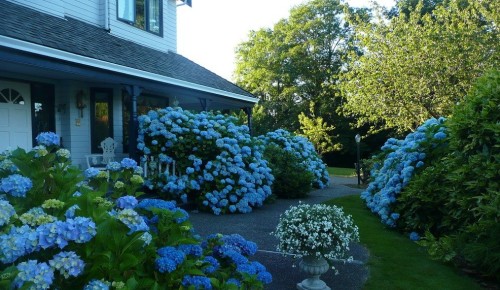












 Start a discussion ...
Start a discussion ...